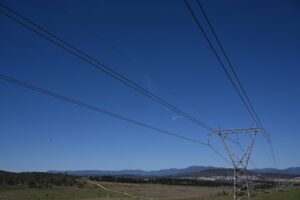A new research lab in the nation’s capital will help accelerate the development of new distributed energy technologies, allowing researchers and tech companies to test new energy devices and software platforms before they are deployed in the real world.
The Australian National University officially opened the Distributed Energy Resources (DER) Lab in Canberra on Tuesday, which will provide researchers with a testing lab that simulates the real-world electricity system to test our new and emerging technologies.
The lab will contain a range of DER technologies, including solar PV, inverters, battery storage and the types of controllable loads that may be used in demand response mechanisms – to allow researchers to test and optimise the different technologies before they are deployed for real-world use.
The development of new monitoring and control systems, as well as intelligent device aggregation and virtual power plants, are likely to benefit from use of the DER Lab, producing new tools that are likely to be necessary to ensure the proper integration of the growing market for distributed energy technologies.
Chief Operating Officer of the Battery Storage and Grid Integration Program, Heather Logie, says the new lab is being opened at a crucial moment when more of the world’s energy system is being electrified.
“We are now in a race to ‘electrify everything’. This means we need to build an energy ecosystem that is powered by millions of connected and different devices, including batteries, vehicles and even air conditioners,” Logie said.
“The DER Lab is helping lead the charge. The ‘plug and play’ set up means researchers, government and industry have the opportunity to test this new tech and how it can be harnessed by our energy grid before the switch is flicked ‘on’.”
ANU Vice-Chancellor professor Brian Schmidt said the research lab would help the shift from the centralised energy system dominated by fossil fuelled power stations, to a system build in a diversity of renewable energy and energy storage technologies.
“As Australia moves away from large centralised fossil-fuel powered generators to a decentralised grid consisting of a vast array of distributed renewable energy assets, we need to find innovative ways to enable this vast amount of renewable energy to safely and effectively enter the electricity grid,” Schmidt said.
“It is through the research carried out in the DER Lab that we, as a society, will be equipped with the technology and capabilities that will help smooth out and accelerate this vital energy transition.”
The new research lab is being supported through $1.5 million in funding provided by the ACT Government. The ACT’s chief minister and minister for climate action, Andrew Barr, said the new facility would help further position the territory as a leader in clean energy innovation.
“The new Distributed Energy Resources Laboratory cements Canberra’s position as the national leader in renewable energy innovation and collaboration,” Barr said.
“Supported through a $1.5 million Priority Investment Program grant in 2019, the DER Laboratory is an Australian first, delivered in partnership between the ANU, UNSW Canberra, IT Power and Evoenergy. It builds on the significant investments that industry and the ACT Government have already made to grow Canberra’s renewable energy sector.
“The facility will unlock new opportunities around renewable energy capability that will ultimately translate into new investments, economic growth, lower energy bills and new jobs for Canberrans.”







